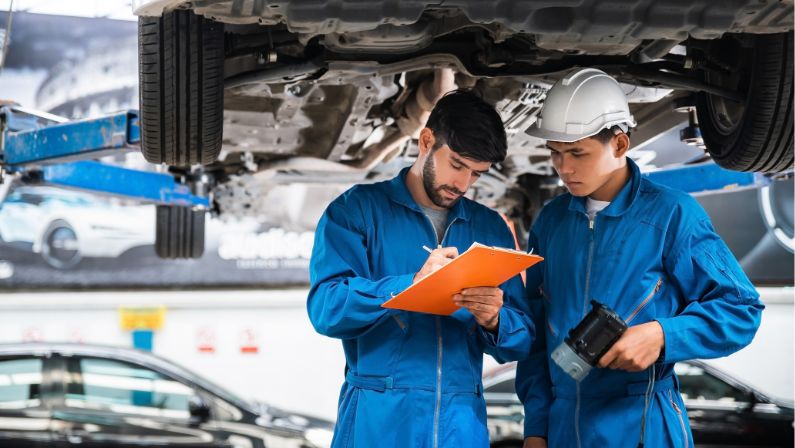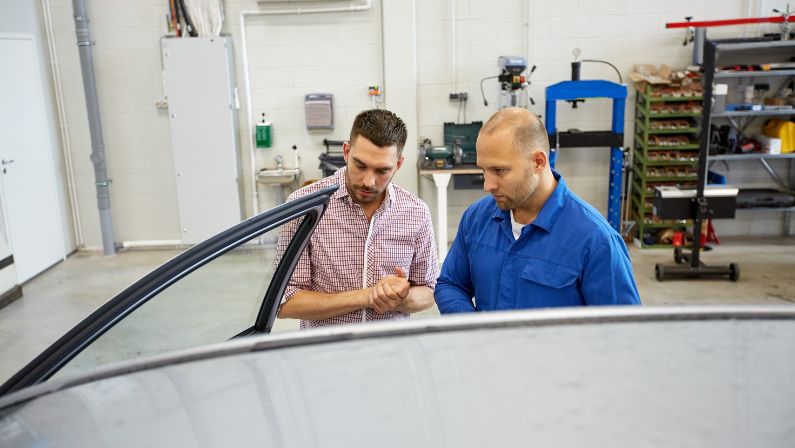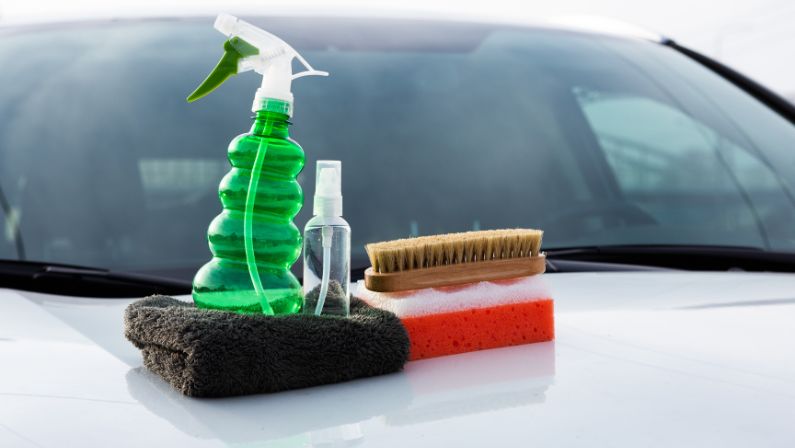When you buy a car, it is important to know how to care for it. You will want to make sure that you are doing everything you can to ensure that your vehicle lasts as long as possible. The best way to do that is by performing routine maintenance on your car.
This article will explain what routine maintenance on a car is and why it’s so important for making sure your vehicle lasts for a long time.
What is routine maintenance on a car
While you may not realize it, your car is a machine and like any other machine, it needs regular maintenance to stay in top shape. The maintenance schedule varies by make and model of car, but generally speaking most vehicles need to be serviced every 10-15,000 miles or so.
Routine maintenance includes checking things like tire pressure and oil levels, replacing filters (like air or fuel filters), topping up fluids (brake fluid and windshield washer fluid) as well as cleaning certain parts (brakes).
The best time to get started with this process is when you first buy your car because this way you will know exactly what kind of routine maintenance schedule to follow for that specific vehicle type.

Why is car maintenance important?
If you want to keep your car in good shape and make sure it’s safe, regular maintenance is a must!
Here are some of the reasons why:
Prevents costly repairs
Extend your vehicle's life
Avoid unexpected car trouble
Maintained cars tend to be safer
Your car will perform better
Good trade-in or resale value

Why do you need a car maintenance checklist?
The first reason you need a checklist is to keep track of all the maintenance that needs to be done.
Car owners often tend to forget about routine maintenance, or at least not follow the schedule as closely as they should. This can cause car breakdowns and problems. Having a checklist in hand will help you remember when each part of your vehicle needs attention, so you won’t have any surprises when it’s time for an oil change or brake checkup.
A second reason for using a checklist is because it will help save money on car repairs down the road. It may seem like there’s no difference between doing one simple thing like changing your oil every three thousand miles and another like doing an oil change every two thousand miles—but if something breaks down during those extra thousand miles that weren’t taken care of with regular service, then it could cost several hundred dollars more than if something had broken after just going through regular service!
So creating a plan and sticking with it is key here: having a list of all scheduled maintenance items helps prevent surprises when something goes wrong during those unplanned times and reduces unexpected costs due to negligence or forgetfulness on behalf of the driver/owner(or both).

What is Included in Car Maintenance?
Fluids
- Oil for engines
- Coolant for radiators.
- Brake liquid.
- Fluid for power steering.
- Fluid for transmissions.
- Fluid with differences.
- Wiper fluid for windshields.
Belts
- Belt alternator.
- Belt for the air conditioner compressor.
- Driving belt.
- A belt fan.
- Brakes.
- Breaking pads.
- The brake rotors.
- Serpentine belt.
Filters
- The engine air filter.
- Air filter in the cabin.
- Filter for fuel.
- Filter for oil.
- Filter for transmission fluid.
Engine
- Alternator.
- Battery.
- The catalytic converter.
- Sensors for oxygen.
- Mounts for motors.
- Muffler.
- Spark plugs
- Timing belt.
Drivetrain
- CV joints
- CV axles
- Drive shaft U-joints
- Suspension brackets and bushings
- Shock absorbers/struts
- Tie rods
Hoses
- Brake lines
- Power steering hoses
- Radiator hoses

Car maintenance schedule
The frequency of service depends on the make and model. No of how many miles you travel each year, make sure to stick to the maintenance schedule for your car.
Service Immediately
- Check engine light: When a problem is found by the vehicle’s control system, the check engine light flashes as a warning. When you notice this yellow warning light, there is no need to panic, but you should still go to the repair shop right away. Without first understanding the cause of the check engine light’s initial illumination, never manually reset one. To ascertain the cause, a mechanic might perform diagnostic tests.
- Headlights/taillights: If a light goes out on your headlights or taillights, check for blown fuses. If the light isn’t the issue, replace it. It is dangerous to drive with burned-out lights, and you risk receiving a traffic citation.
- Tire pressure light: When a tire’s air pressure falls below a certain level, your car’s tire-pressure monitoring system will let you know. Low tire pressure can result in risky driving situations, so fill up your tires as soon as you can.
Monthly Check-up
- Fog lights, turn signals, stop, and parking lights – It’s not difficult to spot a broken headlight. Walk around the car once a month to visually check the lights because some aren’t as evident as others.
- Check the oil and coolant levels at least once a month when the engine is cool, and always top them off before a lengthy trip.
- Tire pressure and tread depth are important factors in tire safety. Check your tires—including the spare—regularly for uneven wear, correct inflation, and sufficient tread depth. To measure the tread depth, use a penny. There is still sufficient tread left if the top of Lincoln’s head is still exposed because there is still more than 2/32″ of depth available.
- Make that there is enough wiper fluid in the reservoir of the windshield wipers. A dirty windshield may cause a visual obstruction, which makes it impossible to drive safely.
3-Month Check-up
- Oil and filters should be changed every three months or three thousand miles in engines that use normal motor oil. For those who use synthetics, the range of between oil changes is up to 10,000 miles.
- Battery and cables: Check to see whether there is corrosion or fluid leakage, and that the battery and cables have tight connections.
- Belts and hoses: The engine compartment’s serpentine belt and other belts shouldn’t appear glossy, cracked, or frayed. Hoses shouldn’t be cracked, bulging, or leaking.
- When the engine is heated, check the power steering fluid level and top it off as necessary.
- Wiper blades: Driving with worn wiper blades poses a safety risk because rainy weather reduces visibility. Check the blades periodically and replace them if necessary if they become damaged or stop clearing the windshield.
6-Month Check-up
- Tire rotation can help improve tire life by leveling wear on the tread and can also lessen vibration and noise issues. Because some tire and wheel types need not be rotated or should only be rotated in a specific manner, check the owner’s handbook in advance.
- Wax vehicle: To help prevent rust on your automobile’s finish, wash your car frequently and apply a wax coating at least twice a year.
- Exhaust system: Inspect it for damage and fix it, especially if the muffler is noisy.
- Check the performance of your battery. Without a strong battery, your automobile won’t start. Test the batteries twice a year at your local car parts store starting when it is three years old.
- Lubrication of the chassis: Your owner’s handbook will specify if the steering, suspension, and chassis systems need to be lubricated on a regular basi
1-Year Check-up
- Cabin air filters, which serve to purify the air within the automobile, must be changed annually. Engine air filters, on the other hand, keep junk out of your engine and ought to be checked at oil changes.
- Brakes: To assist maintain the proper operation of these vital parts, inspect the brake system, including the brake fluid, brake linings, rotors, and brake pads. The operator’s driving habits have a significant impact on the brake pads’ longevity.
- If you detect a decline in the smoothness of your drive, check your shocks and struts. Shocks and struts are a crucial component of the vehicle’s steering system and must to be checked by a qualified mechanic.
- Replace the antifreeze and coolant annually. After 60,000 miles, flush the coolant and the complete cooling system.
Long-Term Check-up
- In a 4-wheel-drive or all-wheel-drive vehicle, the transfer case transfers power from the transmission to the axles. Check the transfer case fluid with a professional in accordance with the manufacturer’s guidelines.
- Differentials are components that divide the torque from the engine and transmit propulsion to the tires at the front and rear of the vehicle. A specialist should inspect the differentials in accordance with manufacturer instructions and lubricate them as needed.
- Tires should be replaced every six to ten years. Regularly inspect tires for proper tread depth of at least 2/32 of an inch.
- Battery: Start testing the battery at three years old. After five years, the battery needs to be changed.
- Timing belt: Replace as directed in the owner’s manual every 60,000 to 90,000 kilometers. Timing belts are not standard on all automobiles. It’s possible that yours has a timing chain, which typically doesn’t require routine maintenance (or replacement) until there is a problem.

Signs My Car Needs Maintenance Done
Braking
Lacking acceleration
Vibration
Stalling or difficulty starting
Fuel efficiency
Shifting
How do you do basic maintenance on a car?
Basic Car Maintenance:
- Check the oil level in your car’s engine.
- Check your brakes, tires and other parts of the car that are important for safe driving.
- Check the coolant and make sure it is at the right level, so that your car does not overheat when you drive it.
- Have your car serviced regularly by a mechanic, especially if you want to keep it in good condition for longer periods of time.
Where to get car maintenance
When you’re looking for a place to get your car serviced, it’s easy to feel overwhelmed. There are so many places that offer car maintenance and services. But where do you start?
If you have friends or family who own cars and have had their vehicles serviced in the past, ask them where they go. If they recommend one particular mechanic or service center, then this is most likely the best place for you to go as well. You can also ask your mechanic if he has any recommendations for other mechanics in the area. If not, he may be able to refer someone else that he knows well or trusts.
But if you can’t find the best, don’t worry! Excellent washing, detailing, and auto maintenance are all offered by AquaShine Car Wash, using methods and supplies that maintain your car in top condition!
Car Maintenance is Key
Car maintenance is important to keep your vehicle in top condition. It takes only a few minutes each week, and can help save you hundreds of dollars over time. With a little bit of knowledge about what routine car maintenance includes, you’ll have no problem making sure your ride is always running smoothly.
In addition to maintaining your car, keeping it clean is also important. With the greatest auto care services in Katy, Texas, AquaShine Car Wash keeps your vehicle in top condition. An all-in-one service provider is exactly what you need to keep your ride smooth, safe, and bright, whether you require a quick wash, detail services, or an auto repair facility.





